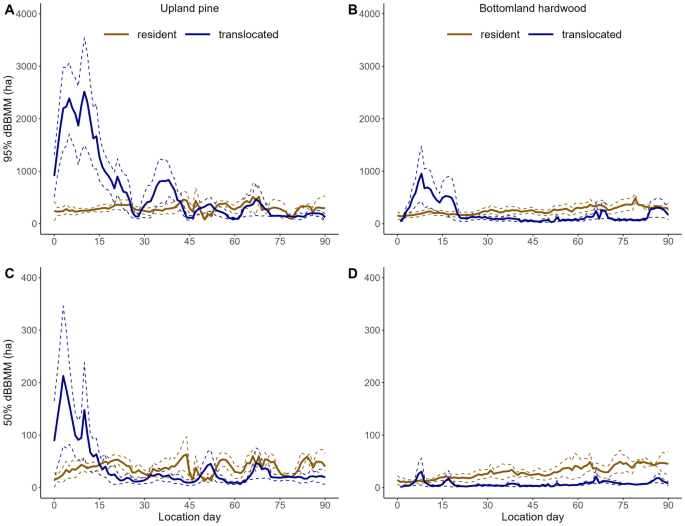2023-04-11 ジョージア大学
研究では、移動された野生イノシシが新しい地域に移動する際の行動を追跡し、彼らが一定期間内にどれだけ移動するかを分析した。研究者は、野生イノシシは新しいエリアに導入されると、広範囲に移動することがわかった。また、移動後、彼らは他のイノシシとグループを形成し、新しい生息地を見つけるまで探索を続ける傾向がある。
<関連情報>
- https://news.uga.edu/study-offers-insights-into-movement-of-wild-pigs/
- https://www.nature.com/articles/s41598-023-31457-3
生息地の質は探索-利用連続体における動物移動のトレードオフに影響を与える Habitat quality influences trade-offs in animal movement along the exploration–exploitation continuum
Joshua B. Smith,David A. Keiter,Steven J. Sweeney,Ryan S. Miller,Peter E. Schlichting & James C. Beasley
Scientific Reports Published:24 March 2023
DOI:https://doi.org/10.1038/s41598-023-31457-3

Abstract
To successfully establish itself in a novel environment, an animal must make an inherent trade-off between knowledge accumulation and exploitation of knowledge gained (i.e., the exploration–exploitation dilemma). To evaluate how habitat quality affects the spatio-temporal scale of switching between exploration and exploitation during home range establishment, we conducted experimental trials comparing resource selection and space-use of translocated animals to those of reference individuals using reciprocal translocations between habitat types of differing quality. We selected wild pigs (Sus scrofa) as a model species to investigate hypotheses related to the movement behavior of translocated individuals because they are globally distributed large mammals that are often translocated within their introduced range to facilitate recreational hunting. Individuals translocated to higher quality habitat (i.e. higher proportions of bottomland hardwood habitats) exhibited smaller exploratory movements and began exploiting resources more quickly than those introduced to lower quality areas, although those in lower-quality areas demonstrated an increased rate of selection for preferred habitat as they gained knowledge of the landscape. Our data demonstrate that habitat quality mediates the spatial and temporal scale at which animals respond behaviorally to novel environments, and how these processes may determine the success of population establishment.


